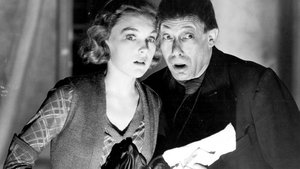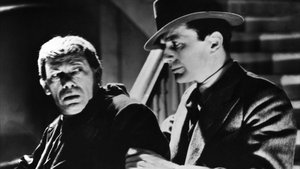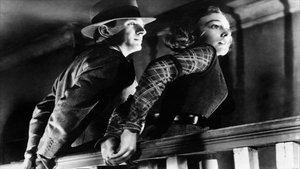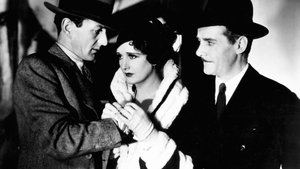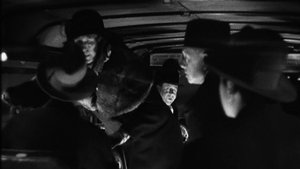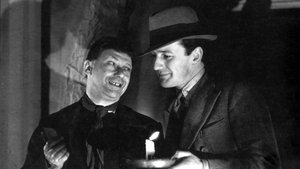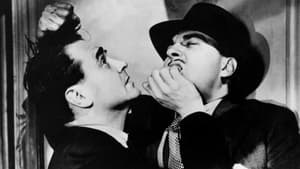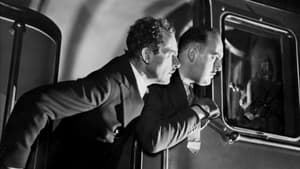Contact: [email protected]
Video Sources 0 Views
- Watch trailer
- Number Seventeen

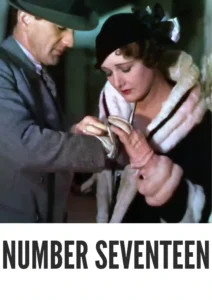
Synopsis
Table of Contents
ToggleReview: Number Seventeen (1932) – A Classic Mystery Thriller Rediscovered in Vibrant Color

Introduction
“Number Seventeen” (1932) represents a captivating journey into the heart of mystery and intrigue, showcasing the timeless appeal of the thriller genre. In this article, we’ll delve into the significance of this early colored film, exploring its impact on audiences and its enduring legacy in the realm of cinematic suspense.
Check The Full Colorized Movies List
Check Our Colorized Movies Trailer Channel
Understanding Number Seventeen 1932: Director, Cast, and Genre
Directed by the visionary Alfred Hitchcock, “Number Seventeen” (1932) showcases his unparalleled talent for crafting suspenseful narratives that keep viewers on the edge of their seats. The film features a talented ensemble cast, including Leon M. Lion, Anne Grey, and John Stuart, whose performances bring the labyrinthine plot to life with palpable tension and excitement. Blending elements of mystery, thriller, and film noir, “Number Seventeen” (1932) transports audiences to a world where nothing is as it seems, and danger lurks around every corner.
Exploring the World of Number Seventeen 1932: Plot and Characters
At its core, “Number Seventeen” (1932) follows the perilous journey of a young man who finds himself embroiled in a web of deception and danger after stumbling upon a mysterious house with a dark secret. As he navigates the treacherous corridors of Number Seventeen, he encounters a cast of eccentric characters, each harboring their own hidden agendas and deadly motives. With its labyrinthine plot and heart-pounding suspense, “Number Seventeen” (1932) keeps audiences guessing until the very end, as they unravel the mystery of the titular house and its enigmatic occupants.
The Art of Film Colorization
Film colorization serves as a transformative tool that breathes new life into classic movies, offering audiences a fresh perspective on familiar stories and characters. By digitally adding color to black and white films, colorization allows viewers to immerse themselves in the rich visual tapestry of cinematic worlds, exploring every nuance and detail with renewed appreciation and wonder.
Early Colored Films: A Brief History
The history of colored films traces its roots back to the early days of cinema, with filmmakers experimenting with various techniques to add color to their creations. From hand-tinted frames to early Technicolor processes, the evolution of colored film has been marked by innovation and ingenuity, paving the way for the development of modern colorization techniques that continue to captivate audiences to this day.
Number Seventeen 1932 and Its Early Colored Version
The decision to release “Number Seventeen” (1932) in a colorized format was met with both excitement and apprehension. While some welcomed the opportunity to experience the film in vibrant color, others expressed concerns about the potential impact on its visual aesthetic. Nevertheless, the early colored version of “Number Seventeen” (1932) offers viewers a fresh perspective on Hitchcock’s early masterpiece, enhancing its atmospheric qualities and immersing audiences in its shadowy world of suspense and intrigue.
The Debate Over Film Colorization
The debate over film colorization continues to divide audiences and critics alike, with proponents praising its ability to revitalize classic movies for modern audiences, while detractors argue that it compromises the artistic integrity of the original work. As the debate rages on, filmmakers and audiences alike are left to ponder the merits and drawbacks of colorization in the ever-evolving landscape of cinema.
Examining Number Seventeen 1932 as an Early Colored Film
As with any colorized classic, the impact of colorization on “Number Seventeen” (1932) is a matter of personal interpretation. Some may argue that it enhances the film’s visual appeal and immerses viewers in its world, while others may feel that it detracts from the stark beauty of the original black and white version. Regardless of one’s stance on the issue, there’s no denying the enduring power of “Number Seventeen” (1932) as a timeless masterpiece that continues to captivate audiences with its spine-tingling suspense and unforgettable characters.
Influence and Legacy: Number Seventeen 1932’s Impact on Cinema
“Number Seventeen” (1932) has left an indelible mark on the world of cinema, inspiring countless filmmakers and captivating audiences with its gripping narrative and atmospheric visuals. From its innovative storytelling to its iconic set pieces, the film continues to resonate with viewers of all ages, reaffirming its status as a true classic of the thriller genre.
Director’s Cinematic Legacy: Beyond Number Seventeen 1932
Alfred Hitchcock’s influence extends far beyond “Number Seventeen” (1932), with a diverse body of work that continues to captivate audiences around the globe. From “Psycho” to “Vertigo,” Hitchcock’s films are celebrated for their masterful suspense, intricate plots, and unforgettable characters, solidifying his legacy as one of the greatest directors in cinematic history. Through his groundbreaking work, Hitchcock has left an indelible imprint on the world of cinema, inspiring generations of filmmakers to follow in his footsteps.
Themes Explored in Number Seventeen 1932
“Number Seventeen” (1932) explores a myriad of themes, from the nature of identity and deception to the inherent dangers of greed and obsession. Through its richly drawn characters and atmospheric setting, the film invites viewers to ponder the complexities of human nature and the moral ambiguity of the world around us. As audiences immerse themselves in the twisted world of “Number Seventeen” (1932), they are reminded of the fragile line between truth and illusion, and the ever-present threat of danger that lurks beneath the surface.
Reception and Controversy Surrounding Number Seventeen 1932
Upon its release, “Number Seventeen” (1932) received mixed reviews from critics, with some praising its innovative storytelling and atmospheric visuals, while others criticized its convoluted plot and uneven pacing. Nevertheless, the film has since been recognized as a cult classic, beloved by fans of Hitchcock and aficionados of the thriller genre alike. The decision to release the film in a colorized format sparked debate among purists, reigniting the age-old discussion surrounding film preservation and artistic integrity. Despite the controversy, “Number Seventeen” (1932) remains a cherished gem that continues to captivate audiences with its timeless appeal and masterful craftsmanship.
Where to Watch Number Seventeen 1932 Online
For those eager to experience the timeless magic of “Number Seventeen” (1932), the film is readily available on popular streaming platforms such as Netflix, Amazon Prime, and Hulu. Whether you choose to watch it in its original black and white format or the early colored version, “Number Seventeen” (1932) promises to transport you to a world of suspense and intrigue, where danger lurks around every corner and nothing is as it seems.
FAQs About Number Seventeen 1932
Q: Is “Number Seventeen” (1932) based on a true story? A: No, “Number Seventeen” (1932) is a fictional tale crafted by Alfred Hitchcock, who drew inspiration from various sources to create its suspenseful narrative.
Q: Who are the main actors in “Number Seventeen” (1932)? A: “Number Seventeen” (1932) features a talented ensemble cast, including Leon M. Lion, Anne Grey, and John Stuart, whose performances bring the film’s characters to life with palpable tension and excitement.
Q: What awards did “Number Seventeen” (1932) win? A: While “Number Seventeen” (1932) did not win any major awards, it has since been recognized as a cult classic, beloved by fans of Alfred Hitchcock and aficionados of the thriller genre alike.
Q: Why was “Number Seventeen” (1932) released in a colorized format? A: The decision to release “Number Seventeen” (1932) in color was made to introduce the film to a new generation of viewers and enhance its visual appeal for modern audiences. While the choice to colorize the film sparked debate among purists, it ultimately allowed “Number Seventeen” (1932) to reach a wider audience and ensure its continued relevance in the annals of cinematic history.
Conclusion
“In Virginia City 1940” transports audiences to a captivating world of lawlessness and adventure, where the spirit of the Wild West comes alive in vivid color. Through its masterful storytelling and unforgettable performances, the film reminds us of the timeless allure of the Western genre and the enduring power of cinema to transport us to another time and place.
As we reflect on the enduring legacy of “In Virginia City 1940,” let us celebrate its status as a timeless classic that continues to captivate audiences with its thrilling action, memorable characters, and breathtaking cinematography. Whether viewed in its original black and white format or the early colored version, “In Virginia City 1940” remains a shining example of the power of cinema to inspire, entertain, and provoke thought.
As we journey through the untamed landscapes of the Wild West and the hearts of its colorful characters, let us remember the enduring lessons of courage, honor, and resilience that “In Virginia City 1940” imparts. In a world filled with uncertainty and upheaval, the film serves as a beacon of hope and a reminder of the indomitable spirit of the human soul.
So, whether you’re a seasoned cinephile or a casual moviegoer, take a moment to revisit “In Virginia City 1940” and experience the magic of the Wild West as never before. For in the timeless tale of love, loyalty, and redemption that unfolds on screen, you’ll find a treasure trove of wisdom and wonder that will stay with you long after the credits roll.
